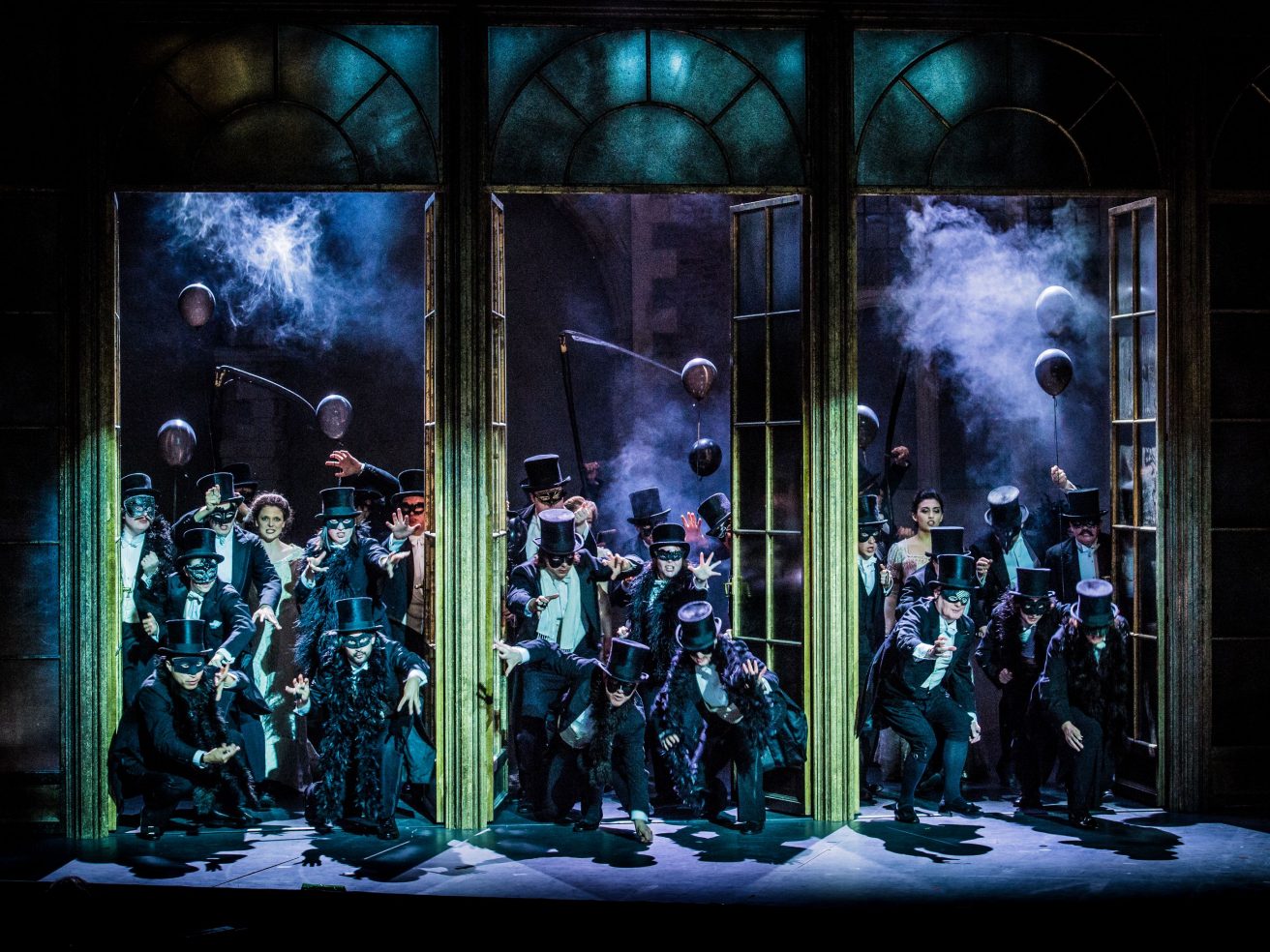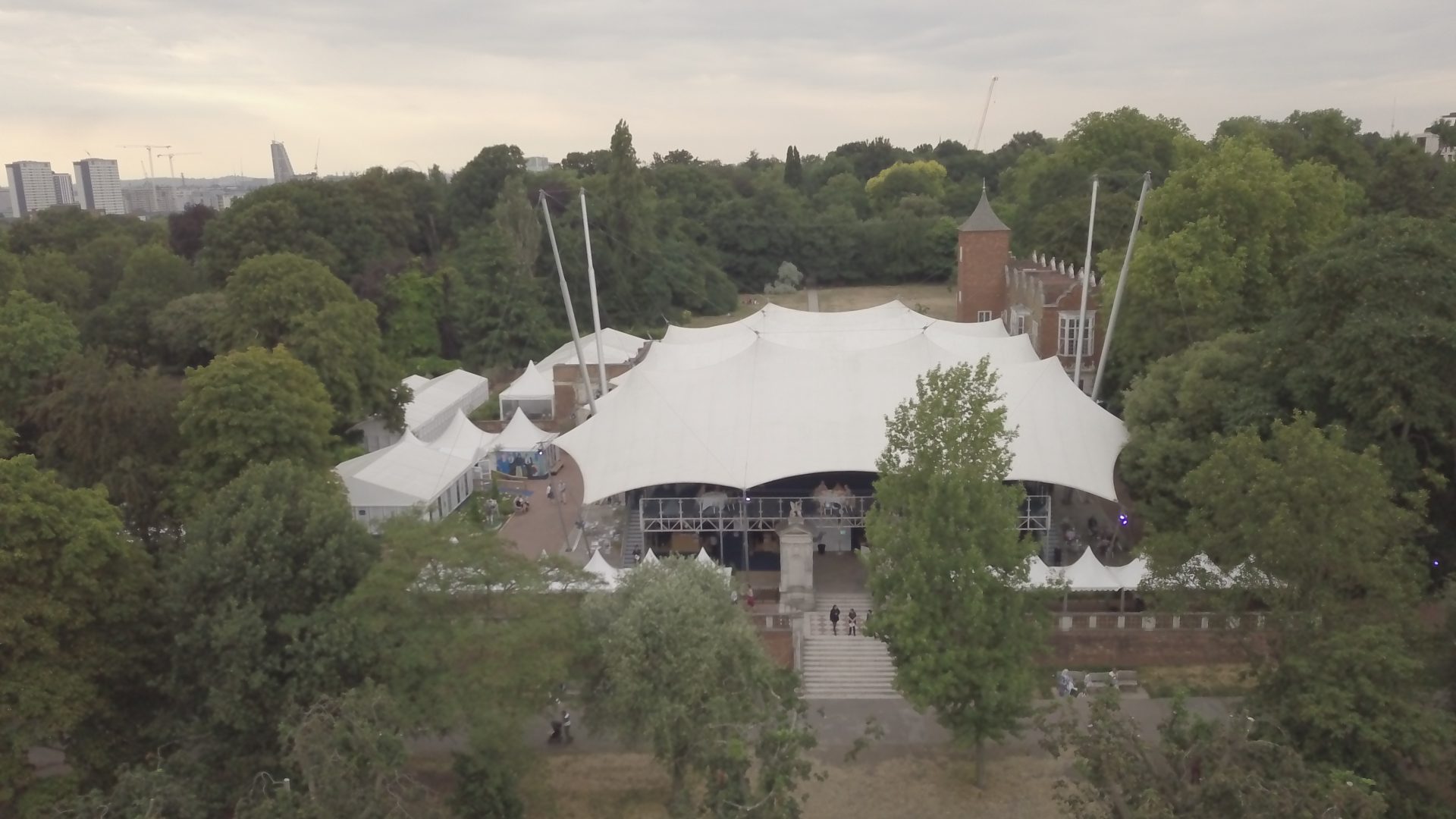There are a handful of operas that are closely tied to actual locations. You can easily walk the events of Tosca in Rome and Carmen in Seville. Strip away all that Bostonian subterfuge, and Un ballo in maschera can be traced to real Stockholm locations relating to the death of Gustavus III. Die Fledermaus is similarly rooted in geography with its three acts set close to or on the Ringstraße. Moreover, poor old Falke’s walk of shame home in the opera’s backstory would definitely have been along this most glamorous of European boulevards.
The construction of the Ringstraße both opened up and encircled Vienna. It also created the vivid city of Strauss, Klimt, Mahler and Stefan Zweig. Without it, they – and Falke and Eisenstein – would still have been living in the medieval Vienna that Mozart and Beethoven knew, and the story of Die Fledermaus would have been quite different.
But what was the Ringstraße and how did it come to be there just in time for Johann Strauss to celebrate its urban follies in Die Fledermaus?
Vienna’s Ring is a series of linked boulevards that follow the line of the old city walls for 6 kilometres. By 1857 Vienna was one of the last European capitals not to have demolished its mediaeval defences. The Habsburg emperor Franz Joseph I (reigned 1848–1916) was conservative in all things to the point of being dull and unimaginative. It was wholly in his nature to put off such a necessary decision.
The city itself had already begun to expand beyond its walls however. As early as the reign of Joseph II (reigned 1765-1790), improvised streets lit by lanterns and even lined by trees had been created in the glacis, the 500m wide “killing zone” beyond the walls where no building – nor even vegetation – was allowed. In 1793, when Mozart’s audience walked from Innere Stadt (Vienna’s District I) for the premiere of The Magic Flute at Emanuel Schikaneder’s Freihaus-Theater auf der Wieden, they would have passed illegal stalls and open-air workshops erected in the glacis by Viennese artisans. In 1850, soon after Franz Josef I came to the imperial throne, Vienna incorporated the Vorstädte (now Districts II – IX) as part of the city proper, thus making the walls a clear impediment to free movement within the newly-enlarged Vienna. Finally, in 1857 Franz Josef bowed to the inevitable with an imperial decree called Es ist Mein Wille (“It is my will”).
This promulgation ordered the demolition of all walls and moats and the construction a great boulevard within the former glacis. Rather than open up this “Ring” around the city to speculative building, the Habsburg government stipulated not just the size of the boulevard but what was to be built along it. The Ringstraße would be a showcase for the grandeur and glory of the Empire. Not only did it become one of the main sights of the city in its own right, it created its own architectural style Ringstraßenstil, an eclectic form of historicism that in our imagination today is invariably the backdrop to nineteenth century Viennese life with all its intrigue, languor and hedonism.
Far from being circular as we might expect, the Ring was always a heptagon, a seven-sided polygon following the irregular lines of the old Viennese fortifications. Some purists will argue that it is actually a hexagon because the seventh side is Franz-Josefs-Kai overlooking the Danube Canal and – so the argument runs – not part of the Ring itself. This north-eastern edge of the boulevard not only lacks the all-important “Ring” suffix, but also the grand civic buildings planned by Vienna’s top architects. But without Franz-Josefs-Kai the Ring would be incomplete. So for the purposes of this article – and in the minds of many Viennese – the Ring has seven sides.
Those seven sides were divided into eight streets of roughly equal length. Some were named after points on the Ring – Schotten Ring after Schottenstift (the Scottish Abbey), Burg Ring after the imperial palace. Some were named after streets – Kartner Ring after the road that led towards Carinthia which it crossed – and Schubert Ring was named after the composer.
To fund the Ringstraße, a “City Extension Fund” was created, which was administered by the government. Much of the money to construct the boulevards, and the public buildings that would stand on them, was sourced from Jewish banking families within the Empire. These families in turn were offered the opportunity to build their own palais on or near the Ring. (This display of Jewish wealth was to have unfortunate consequences in the years following Austria’s defeat in World War I.)
The plans were altered along the way with some original parts of the city walls allowed to remain. The Braun Bastion on which the Saxe-Coburg family (in-laws of Queen Victoria) had only just, in 1845, completed their palace was not demolished. Otherwise their home would have come crashing down with it. On Universitäts Ring the Mölker Bastei was retained, which means that today we are still able to visit the apartment in which Beethoven lived from 1804 to 1815.
In some parts of the Ring the demolition of the walls exposed some new views into the city. On Franz-Josefs-Kai, the Ruprechtskirche, Vienna’s oldest church was suddenly visible from the Danube Canal for the first time in centuries. Built on the site of the Roman city of Vindobona in the Twelfth century, this church had all but disappeared as mediaeval Vienna had grown ever taller and denser.
Elsewhere the Ring created a broad tabula rasa on which the Emperor, his architects and his financiers could erect a sequence of grand buildings. One of the first to be constructed was the Heinrichshof, a city block opposite the proposed site of the new Imperial opera house. It was built by the industrialist Heinrich von Drasche-Wartinberg to designs by Theophil Hansen and completed in 1863. Here the composer Anton Bruckner would live for many years. Sadly, it was blown up in a bombing raid in 1945 and replaced with a dull commercial building in unappetising concrete that is still there. Fortunately, most of the building round the Ring survived the war.
One of the first Stadtpalais (city palaces) to be built was Palais Württemberg on Kärntner Ring. It was planned as the city residence of the newly married Duke of Württemberg and his wife Duchess Marie Therese, a distant relative of the Emperor. The palace took up a whole city block and had a front entrance on to the Ring wide enough for two carriages to pass. The Duke and the Duchess moved in 1866 but sold in 1871 and it was was subsequently converted into the Imperial Hotel. In its time the hotel hosted Richard Wagner as a guest and employed Adolf Hitler as a jobbing workman in his days as a penniless artist. The Führer returned to the Imperial in glory following the Anschluss of 1938. Later he kept Mussolini a virtual prisoner in this hotel following his “rescue” from Italy.
Another royal builder on the Ring was “Luziwuzi”, Archduke Ludwig Viktor of Austria, brother to the Emperor and the only openly transvestite and homosexual member of the Habsburg family. In 1863 Luziwuzi decided to erect the first new royal palace on the Ring. The design by Heinrich von Furstel was completed in 1869 at the junction of Kartner Ring and Schubert Ring. It contained Royal offices, living apartments and a ballroom. This mixed use pattern was replicated in various plutocrats’ palaces and even in apartment blocks, where someone like Eisenstein might only rent a small flat but would have access to grand public rooms on other floors. Luziwuzi’s place is now a secondary performing space for the Volkstheater.
Released from property-owning restrictions by the deal struck with Franz Joseph, Vienna’s Jewish bankers – the Ephrussi, Leitenberger, Schey, Wertheim, Todesco, Eskeles, and Epstein families – built palaces on or just off the Ring. The history of Palais Ephrussi has been told by Edmund de Waal, a descendant of the family, in The Hare with the Amber Eyes. It was designed for the Ephrussis by Theophil Freiherr von Hansen, the architect of so much of the Ring, including the Austrian Parliament Building and the Borse. Prince Orlofsky probably partied in a building very like Palais Ephrussi.
After the 1938 Anchluss, the building’s then owner Viktor Ephrussi signed it away (along with many artworks) in order to avoid the arrest of his family. The palais was taken over by the new Nazi administration of Austria. Ironically the Landesgericht, Vienna’s old prison where the last act of Die Fledermaus would have been set, is only one block west of Palais Ephrussi.
One of the commonest structures occurring around the Ring was the city block consisting of four palatial units that backed on to a shared courtyard. A typical example on the Schubertring comprised the Adeliges Casino with Palais Ötzelt next to it, and then behind them both the Palais Gutmann and Mietpalais Borckenstein. These four buildings made up a single structural unit block that between 1939 and 1970 was merged to create Austria’s GiroCredit Bank and in 2012 – in a development reflecting Vienna’s increasing role as a tourist centre – the Ritz Carlton Hotel.
The Ring also brought Viennese café culture to its peak of urbanity. This newly-expanded city was an expensive place to live and so, post-Ringstraße, many unmarried men spent their days socialising, reading and even working in cafés. In all there were 27 new cafés built around the Ring (of which only three survive now). Many of these young gentlemen even had their post delivered to their favourite haunt. They went home only to sleep, usually in a cheap tenement room where they would not dream of entertaining. Without a doubt, the café society we associate with Eisenstein and Falke was a direct result of the Ringstraße.
The Ring was the greatest achievement of Emperor Franz Joseph I. He had his own personal project within it, the creation of the twin Natural History and Kunsthistorisches Museums. These matching buildings on the Burg Ring reflect the emperor’s desire to tidy up his imperial property and say much about his lack of imagination too, but the Ring, into which he was pushed by events in 1857, remains his greatest memorial. It certainly beats the disastrous war he was pushed into in 1914 which destroyed the Habsburgs and left Vienna an imperial city shorn of empire.
Originally printed in the 2016 Season Programme Magazine


